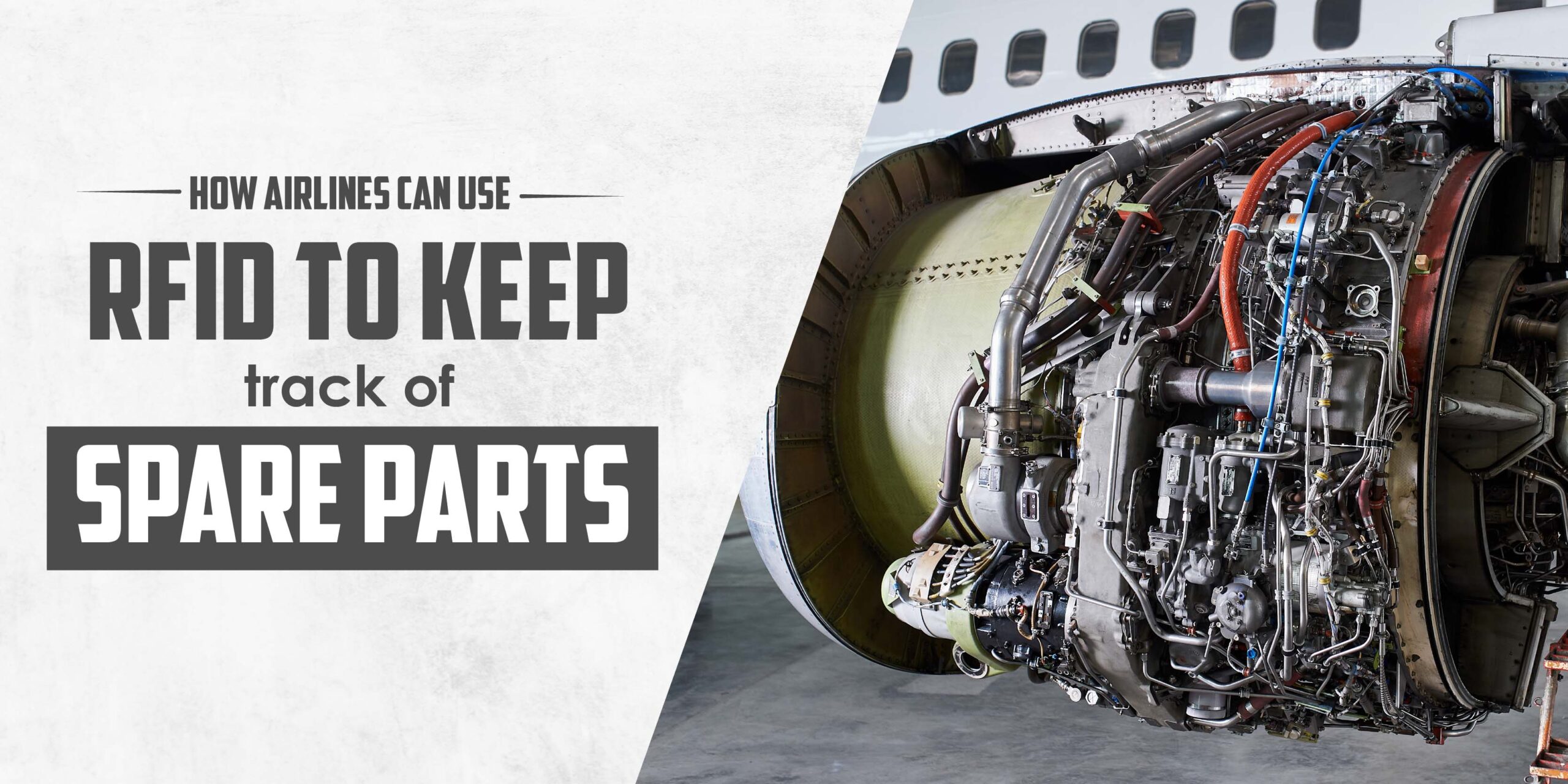In the highly regulated and safety-centric world of aviation, efficient maintenance operations are paramount. Airlines invest significant resources in ensuring that their aircraft are well-maintained and operational at all times. A crucial aspect of this maintenance process is the management of spare parts. Traditionally, spare parts management has been a labor-intensive and error-prone process, but with the advent of Radio Frequency Identification (RFID) technology, airlines now have a powerful tool at their disposal to streamline this aspect of their operations. In this article, we will explore how airlines can leverage RFID technology to effectively track spare parts and optimize their maintenance processes.
The Challenges of Spare Parts Management in Aviation
Airlines operate in a dynamic environment where aircraft maintenance schedules, regulatory requirements, and unforeseen maintenance issues can create challenges in managing spare parts. Some of the key challenges include:
- Inventory Accuracy: Maintaining accurate inventory records of spare parts across multiple locations can be challenging, leading to stockouts or excess inventory.
- Manual Processes: Traditional manual processes for tracking spare parts are time-consuming and prone to errors, such as misplaced or mislabeled parts.
- Visibility: Limited visibility into the location and status of spare parts can lead to delays in maintenance activities and increased aircraft downtime.
- Compliance: Regulatory requirements mandate strict record-keeping and traceability of spare parts, adding complexity to the management process.
The Role of RFID in Spare Parts Tracking
RFID technology offers a transformative solution to the challenges faced by airlines in spare parts Tracking. By attaching RFID tags to spare parts and utilizing RFID readers strategically placed throughout maintenance facilities, airlines can achieve the following benefits:
- Real-Time Visibility: RFID tags enable real-time tracking of spare parts as they move within maintenance facilities. Airlines can instantly locate spare parts, whether they are in storage, in transit, or being used for maintenance tasks.
- Automated Data Capture: RFID technology automates the process of capturing data, eliminating the need for manual inventory checks. As spare parts pass by RFID readers, data such as part number, serial number, and location is automatically recorded in the inventory database.
- Accurate Inventory Management: RFID-enabled asset tracking ensures accurate inventory records, reducing the risk of stockouts or excess inventory. Airlines can optimize their inventory levels based on actual usage data, leading to cost savings and improved operational efficiency.
- Enhanced Traceability: RFID tags provide unique identifiers for each spare part, enabling seamless traceability throughout its lifecycle. Airlines can easily track the history of each part, including procurement, usage, and maintenance activities, ensuring compliance with regulatory requirements.
- Streamlined Processes: RFID technology streamlines various maintenance processes, such as parts replenishment, cycle counting, and inventory reconciliation. By automating these tasks, airlines can free up valuable resources and focus on core maintenance activities.

Implementing RFID-Based Spare Parts Tracking
To implement RFID-based spare parts management effectively, airlines should consider the following steps:
Utilizing RFID technology, metal tags, RFID handheld readers, and TagMatiks Asset Tracking software, airlines can efficiently track spare parts throughout their lifecycle. Below is a step-by-step process outlining how airlines can implement RFID for spare parts management:
1. Planning and Preparation:
Assessment: Conduct a thorough assessment of the current spare parts management process to identify pain points and areas for improvement.
Define Objectives: Clearly define objectives for implementing RFID technology, such as improving inventory accuracy, reducing downtime, and enhancing operational efficiency.
2. Tag Selection and Placement:
Select Metal-Compatible RFID Tags: Choose RFID tags specifically designed for use on metal surfaces to ensure optimal performance and durability.
Tag Placement: Strategically place RFID tags on spare parts in locations that maximize readability and minimize interference from metal surfaces or other obstructions.
3. Use of RFID Handheld Readers:
Reader Placement: Choose RFID Fixed Reader and handheld readers for Cycle count and Transactions process.
Configuration: Configure RFID readers to communicate with Asset Tracking software like TagMatiks AT Lite and TagMatiks AT and ensure seamless data transmission.
4. Integration with Asset Tracking Software:
Software Installation: Deploy Asset Tracking Software (TagMatiks AT Lite, TagMatiks AT) and ensure proper integration with existing systems, such as inventory management software or Enterprise Resource Planning (ERP) systems.
Data Mapping: Configure software to map RFID tag data fields to relevant asset attributes, such as part number, serial number, and maintenance history.
5. Asset Tagging and Registration:
Tagging Process: Attach RFID tags to spare parts according to predetermined tagging guidelines, ensuring proper adhesion and readability.
Registration: Register RFID-tagged spare parts in Asset Tracking software by associating each tag with relevant asset information, including part description, vendor details, and procurement date.
6. Inventory Management and Tracking:
Inventory Reconciliation: Conduct an initial inventory reconciliation to ensure all RFID- tagged spare parts are properly registered in the software.
Asset Movement Tracking: Utilize RFID readers to track the movement of spare parts in real-time, updating their location status in Asset Tracking software accordingly.
7. Maintenance and Lifecycle Management:
Maintenance Logging: Log maintenance activities, such as repairs, inspections, and replacements, in Asset Tracking software to maintain a comprehensive asset lifecycle history.
Scheduled Maintenance Alerts: Set up automated alerts and reminders in software to notify maintenance personnel of upcoming scheduled maintenance tasks based on asset usage and condition.
8. Reporting and Analysis:
Generate Reports: Use TagMatiks Asset Tracking software to generate reports and analytics on spare parts inventory levels, usage trends, and maintenance performance.
Data Analysis: Analyze RFID data captured by TagMatiks to identify opportunities for process optimization, inventory optimization, and cost reduction.
Conclusion
In conclusion, RFID technology offers airlines a powerful solution for streamlining spare parts management and optimizing maintenance operations. By leveraging RFID technology to achieve real-time visibility, automated data capture, and accurate inventory management, airlines can enhance efficiency, reduce costs, and ensure compliance with regulatory requirements. As the aviation industry continues to evolve, RFID-based spare parts management will play an increasingly important role in maintaining the safety and reliability of aircraft fleets.
